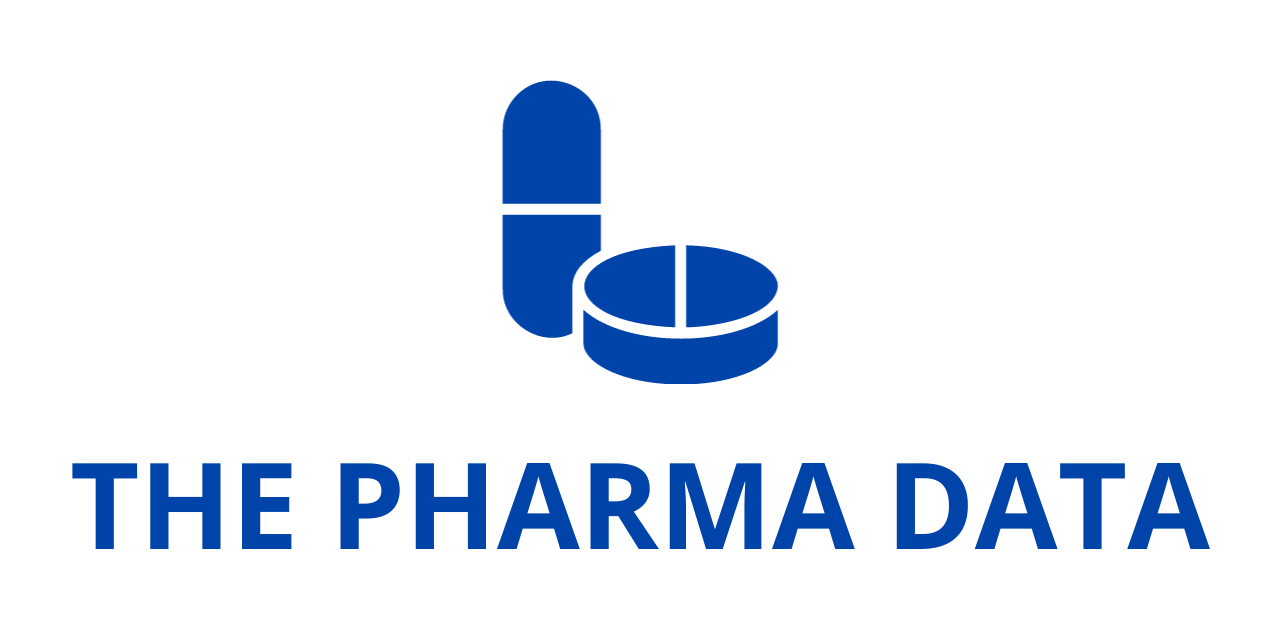
FDA Expands Approval of Takeda’s VONVENDI®, First Recombinant von Willebrand Factor Therapy, to Include Routine Prophylaxis for Adults and Children with von Willebrand Disease
Takeda Pharmaceutical Company Limited (TSE:4502/NYSE:TAK), a global biopharmaceutical leader with a longstanding commitment to advancing therapies in rare diseases and hematology, has announced a significant regulatory milestone for patients living with von Willebrand disease (VWD). The U.S. Food and Drug Administration (FDA) has approved a supplemental Biologics License Application (sBLA) for VONVENDI® [von Willebrand factor (Recombinant)], expanding its clinical indication to cover routine prophylaxis to reduce the frequency of bleeding episodes in adults with VWD—including those with Type 1 and Type 2 disease—as well as on-demand and perioperative management of bleeding in pediatric patients.
This expanded approval broadens the therapeutic reach of VONVENDI, which was already indicated for on-demand and perioperative use in adults, and for prophylaxis in adults with severe Type 3 VWD receiving on-demand therapy. With this decision, VONVENDI becomes the only recombinant von Willebrand factor (rVWF) therapy approved for both adults and children across multiple VWD subtypes, underscoring its role as a cornerstone treatment option in managing this complex bleeding disorder.
Von Willebrand Disease: The Most Common Inherited Bleeding Disorder
Von Willebrand disease affects an estimated 3.2 million people in the United States and millions more worldwide, making it the most prevalent inherited bleeding disorder. Unlike hemophilia, which primarily affects males, VWD occurs equally among men and women. Its impact is far-reaching, given that many patients remain undiagnosed or undertreated, living with the consequences of recurrent bleeding episodes.
VWD arises from a deficiency or dysfunction of von Willebrand factor (VWF)—a critical clotting protein that plays dual roles: enabling platelet adhesion at sites of vascular injury and stabilizing circulating factor VIII, FDA another essential clotting factor. Without adequate or functional VWF, patients can experience a spectrum of bleeding problems ranging from frequent nosebleeds and easy bruising to life-threatening hemorrhages after surgery or childbirth. Women are disproportionately affected in terms of disease burden, as heavy or prolonged menstrual bleeding and postpartum hemorrhage often complicate their care.
The disease is classified into three main types:
- Type 1 VWD: The most common form, characterized by lower-than-normal levels of VWF.
- Type 2 VWD: Marked by qualitative defects in VWF, meaning the protein is present but does not function properly. Subtypes include 2A, 2B, 2M, and 2N.
- Type 3 VWD: The rarest and most severe form, where patients have little to no VWF.
While desmopressin (DDAVP) and plasma-derived VWF concentrates have historically been used to manage VWD, not all patients respond adequately, and FDA some therapies carry risks of variability, impurities, or infections. The advent of recombinant therapies like VONVENDI represents an important advance in providing standardized, safe, and effective options for patients.
VONVENDI: Expanding Options in Bleeding Disorder Management
VONVENDI, Takeda’s recombinant VWF therapy, was first approved in the U.S. in 2015, marking a breakthrough in hemophilia and VWD care. Unlike plasma-derived therapies, it is manufactured using recombinant technology, ensuring high purity, consistency, and elimination of risks associated with human plasma sourcing.

The therapy is infused intravenously and designed to replace missing or defective VWF, thereby restoring clotting ability. VONVENDI is notable for its long half-life, measured at 22.6 hours in adults (50 IU/kg dose) and 14.3 hours in children, which provides a sustained effect and reduces the need for frequent dosing. FDA Clinical data show that most bleeding episodes—including non-surgical events—can be controlled with a single infusion: 157 of 192 bleeds in adults and 80 of 104 bleeds in children resolved after one dose.
With the new FDA approval, VONVENDI now addresses three major areas of need:
- On-demand treatment of bleeding episodes.
- Perioperative management of bleeding in surgical settings.
- Routine prophylaxis in adults to prevent bleeding episodes across VWD subtypes.
This broader coverage positions VONVENDI as a first-line recombinant therapy in VWD, giving physicians a versatile option for individualized patient care.
Clinical Evidence Supporting the Expanded Approval
The FDA’s decision is grounded in evidence from three pivotal clinical trials, supplemented by real-world data:
- Phase 3 Prophylaxis Study in Adults (NCT02973087)
- Evaluated the efficacy of VONVENDI in reducing bleeding frequency.
- Showed significant reductions in annualized bleeding rates, particularly in spontaneous and joint bleeds.
- Phase 3 Pediatric Study (NCT02932618)
- Focused on children with VWD requiring treatment for bleeding episodes.
- Confirmed safety and efficacy in younger patients, supporting its pediatric indication.
- Phase 3b Continuation Study (NCT03879135)
- Long-term extension involving both adults and children.
- Reinforced the sustained safety profile, prophylactic benefit, and dosing convenience of VONVENDI.
Together, these studies established the clinical profile of VONVENDI—demonstrating reduced bleeding rates, rapid control of acute bleeds, and a manageable safety profile.
Expert Perspectives on the Approval
Dr. Jonathan C. Roberts, a leading hematologist and investigator in the prophylaxis study, emphasized the significance of this milestone:
“The FDA’s approval of VONVENDI for routine prophylactic use in adults with all VWD types marks a pivotal milestone in advancing care for this challenging condition. Prophylactic treatment is critical to reduce the frequency of bleeds in adults,FDA including spontaneous and joint bleeds. Establishing prophylaxis as the standard of care for all adults with VWD, regardless of subtype, represents a significant step forward in helping to manage bleeding risk and the burdens that bleeds can have on patients’ daily lives.”
For many patients, this means transitioning from reactive management—treating bleeds after they occur—to preventive therapy that improves daily functioning, reduces hospital visits, and enhances quality of life.
Takeda’s Commitment to Rare Diseases and Hematolog
Takeda has long been a leader in rare disease and bleeding disorder therapeutics, particularly following its acquisition of Shire in 2019, which strengthened its hematology portfolio. VONVENDI is a flagship product in its rare disease division, FDA reflecting the company’s mission to improve outcomes in underserved patient populations.
Cheryl Schwartz, Senior Vice President, U.S. Rare Disease Business Unit Lead and U.S. Commercial Operations at Takeda, underscored the company’s dedication:
“Children and adults living with VWD face unique challenges, including bleeds that can disrupt daily activities like school, work or spending time with loved ones, often leading to physical and emotional burdens. We are proud to have supported adults with VWD since VONVENDI’s initial approval in 2015 and will now be able to help even more patients manage their condition. This milestone highlights Takeda’s unwavering commitment to the blood and bleeding disorders community as we strive to deliver innovative therapies.”
Takeda has also submitted regulatory applications in Japan and the European Union seeking to expand the pediatric indications of VONVENDI (branded as VEYVONDI™ in the EU), further signaling its global ambition to bring broader treatment access.
Important Safety Information
Like all factor replacement therapies, VONVENDI carries risks that clinicians and patients must consider:
- Contraindications: Patients with a history of life-threatening hypersensitivity reactions to VONVENDI or its excipients (such as polysorbate 80, mannitol, or animal proteins) should not receive the therapy.
- Thromboembolic Events: Excessive clotting events including deep vein thrombosis, pulmonary embolism, myocardial infarction, and stroke have been reported. Risk is heightened in patients with underlying prothrombotic factors, including low ADAMTS13 levels. Careful monitoring and prophylactic measures are recommended.
- Hypersensitivity and Infusion Reactions: Anaphylaxis, urticaria, chest tightness, nausea, and hypotension may occur. Patients should be monitored during infusion, with immediate discontinuation if severe reactions develop.
- Neutralizing Antibodies: Development of inhibitors to VWF and/or factor VIII may occur, reducing treatment efficacy. Patients unresponsive to expected dosing should undergo testing for inhibitors.
- Laboratory Monitoring: Regular assessment of plasma VWF activity and factor VIII levels is critical to prevent thrombotic risk from excessive factor accumulation.
- Adverse Reactions: The most common side effects (≥2% of patients in trials) included headache, nausea, vomiting, dizziness, and pruritus.
These FDA considerations highlight the importance of careful patient selection, dosing, and monitoring when prescribing VONVENDI.
Changing the Standard of Care
The expansion of VONVENDI’s label represents more than just an additional indication—it signals a shift in treatment philosophy for von Willebrand disease. Prophylaxis, once limited to patients with the most severe forms, is now validated as a standard option across VWD subtypes in adults. FDA This could reduce FDA complications like joint disease from recurrent hemarthroses, decrease hospital utilization, and improve long-term patient outcomes.
Moreover, the pediatric approval ensures that children—who often face disruption in schooling and social development due to frequent bleeds—can access targeted therapies that provide stability and confidence for families managing VWD.
With the FDA’s expanded approval, VONVENDI now stands as the only recombinant von Willebrand factor therapy with indications spanning both adults and children, across on-demand, perioperative, and prophylactic use. This milestone reflects years of research, patient advocacy, and industry FDA commitment to addressing the unmet needs of those with von Willebrand disease.
For patients and families living with VWD, the approval offers greater treatment flexibility, better bleeding control, and improved quality of life. FDA For physicians, it represents a scientifically validated tool to move beyond reactive care toward preventive strategies that redefine standards of care.
As FDA Takeda continues to pursue additional global approvals and expand access, VONVENDI’s evolving role underscores the growing impact of recombinant therapies in hematology—and the ongoing journey to transform the lives of people with rare bleeding disorders.




